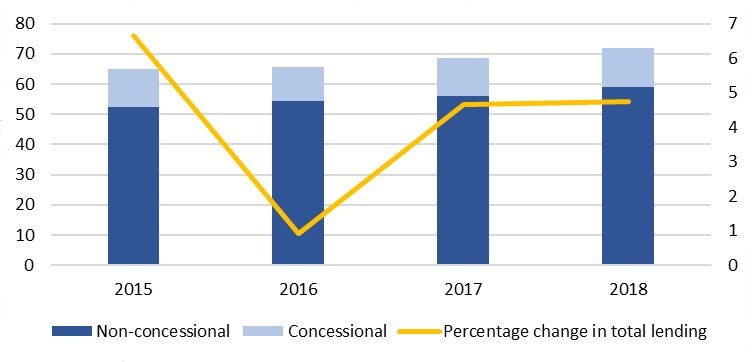The Addis Ababa Action Agenda recognizes the significant potential of multilateral development banks (MDBs) and other international development banks, including in countercyclical lending and providing both concessional and non-concessional stable, long-term development finance.
The Addis Agenda specifically:
- Invites multilateral development banks to provide concessional and non-concessional stable long-term finance
- Encourages MDBs to make optimal use of their resources and balance sheets, consistent with maintaining their financial integrity; encourages MDBs to make use of all risk management tools, including through diversification
- Encourages MDBs to update and develop policies in support of 2030 agenda and SDGs
- Encourages multilateral development finance institutions to establish a process to examine their own role, scale and functioning to enable them to adapt and be fully responsive to the sustainable development agenda
- Welcomes efforts by new development banks to develop safeguard systems in open consultation with stakeholders on the basis of established international standards, and encourages all development banks to establish or maintain social and environmental safeguard systems that are transparent, effective, efficient and time sensitive
- Encourages multilateral development banks to further develop instruments to channel the resources of long-term investors towards sustainable development, including through long-term infrastructure and green bonds
Latest developments
In 2018, total lending by MDBs rose 4.7 per cent to $71.9 billion. Concessional lending, primarily from the International Development Association (IDA), accounted for about 18 per cent of the total, with the major recipients being least developed countries (LDCs).
Lending by multilateral development banks, 2015–2018
(Billions of United States dollars, current)
 Source: World Bank, International Debt Statistics.
Source: World Bank, International Debt Statistics.
In 2019, several MDBs agreed to a common “value for money” framework to optimize their resources. MDBs have already taken several actions in this area, including merging concessional windows with ordinary capital; securitizing balance sheets; and insuring or reinsuring risks. For example, the merger of the windows of the Asian Development Bank (ADB) is expected to increase annual loan and grant approvals by over 50 per cent, to over $20 billion by 2020. The African Development Bank (AfDB) synthetic security made space for $650 million more in loans. The AfDB and African Trade Insurance completed a credit insurance deal worth $500 million to cover non-sovereign loans, which made headroom of $400 million. The European Bank for Reconstruction and Development (EBRD) has used unfunded risk participations, where privately owned insurance or reinsurance companies take on the risk exposure of a portion of EBRD loans, signing €1.2 billion worth of deals since 2014, including over €500 million in 2019.
Read the latest analysis by the Task Force here
Additional material